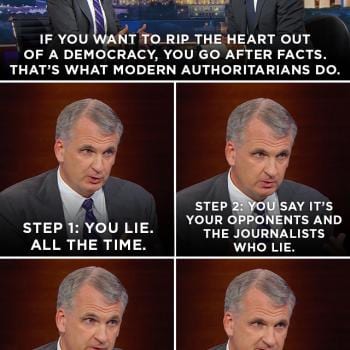More scholar-nerdiness to follow (a warning or an enticement)…
Here are a couple great web pages giving simple introductions to language trees and to the evolution of scripts. Neither is exhaustive (of course), and I was sad to see Persian/Farsi omitted from the language tree, but these are very helpful tools for beginners, and some not-so-beginners to get oriented. The whole idea of a “Indo-European” language family is still foreign to many Buddhists. Hopefully we can help with that a bit.
Likewise with scripts. I first learned Sanskrit using the Devanagari script, somehow assuming it was like the Roman or Greek alphabets: really old. Not so, as it turns out. And it wasn’t until this year in China that some kind and friendly travel-mates caught me up on this. It turns out that most of the Sanskrit that flowed north to Tibet and China (and hence Buddhist Texts, since little or no Pali was translated into these languages to my knowledge) would have been in other, earlier scripts…. and even that is a simplification, I’m finding. As with most things, the more you learn, the more you see how much is out there still to be learned.
The Pali Companion
The Language Tree
1. Pali is one of the many vernacular dialects derived from Sanskrit called Prakrits. Prakrits are known to be used since the 3rd century BC (Middle Indo-Aryan period).
2. The development of Indo-Aryan languages is generally divided into three stages as follows: Old Indo-Aryan (3rd century BC and before), Middle Indo-Aryan (from about 3rd century BC) and Modern Indo-Aryan (from about 10th century AD).
3. The Old Indo-Aryan period comprises Vedic Sanskrit (used in Vedas, Brahmanas and Upanishads) and classical Sanskrit (used in Mahabharata, Ramayana and Puranas). However, contemporary Sanskrit and Buddhist Hybrid Sanskrit (used in Mahayana texts) are later developments during the Middle Indo-Aryan period.
| Family | Sub-Family | Branch | Group | Language |
| Indo-European | Germanic | West Germanic | Anglo-Frisian | English** |
| Netherlandic-German | German | |||
| Italic | Latin-Faliscan (Latinian) | Latin* | ||
| Romance | Spanish, Portuguese, French | |||
| Slavic | East Slavic | Russian | ||
| Greek | Greek* | |||
| Indo-Iranian | Indo-Aryan (Indic) | Old Indo-Aryan | Sanskrit* | |
| Middle Indo-Aryan | Pali* | |||
| Modern Indo-Aryan | Hindi, Bengali, Sinhalese | |||
| Afro-Asiatic (Hamito-Semitic) | Semitic | North Central | Hebrew* | |
| South Central | Arabic* | |||
| Sino-Tibetan | Chinese (Sinitic) | Mandarin Chinese** | ||
| Tibeto-Burman | Burmese, Tibetan | |||
| Japanese | Japanese | |||
| Korean | Korean | |||
| Austro-Asiatic | Mon-Khmer | Khmer | ||
| Viet-Muong | Vietnamese | |||
| Altaic | Mongolian | Mongolian | ||
| Tai | Thai, Lao | |||
| Austronesian | Malayo-Polynesian | Western Malayo-Polynesian | Malay** (Malaysia, Indonesia) | |
| Dravidian | Tamil** | |||
| * Languages used in major religious texts: – Pali: Theravada Tipitaka (Buddhism) – Sanskrit: Vedas (Hinduism), Mahayana Texts (Buddhism) – Hebrew: Old Testament (Judaism, Christianity) – Latin: New Testament (Christianity) – Greek: New Testament (Christianity) – Arabic: Koran (Islam) ** Four official languages of Singapore. |
||||
Table 1: A Simplified Tree of World Languages
![]() To learn more about languages, please refer to Article on “Language” (Encarta Encyclopedia) and the Ethnologue at http://www.sil.org/ethnologue/.
To learn more about languages, please refer to Article on “Language” (Encarta Encyclopedia) and the Ethnologue at http://www.sil.org/ethnologue/.
The Pali Companion
The Scripts
1. According to Sri Lanka tradition, the first written Pali Tipitaka was completed in the first century BCE near Matale in Sri Lanka. These texts were probably written in the Brahmi script.
2. The earliest Buddhist texts discovered to-date were Gandhari text written in the Kharosthi script, and found in the Gandhara region of modern day Afghanistan.
3. The Edicts of Asoka, a collection of inscriptions from the Indian emperor Asoka, were written in various languages and scripts, including Magadhi in the Brahmi script, a form of Sanskrit in the Kharosthi script, and even in Greek and Aramaic.
4. Today, the main scripts used for presenting the Pali Tipitaka include Roman, Sinhala, Thai, Burmese, Khmer, Lao, Tai (in Yunnan, China) and more recently Devanagari.
| England 1 | Scripts | China 1 | ||||||||
| Prehistoric Britain | 1050 BCE – Phoenician alphabet | Indus 2 script or Aramaic script ??? | 1050 BCE – Oracle Bone script 甲骨文; also Bronze script 金文 | |||||||
| 9th century BCE – Greek alphabet | 8th century BCE – Aramaic alphabet | |||||||||
| 8th century BCE – Cumae alphabet | 8th century BCE – Seal script 篆书 | |||||||||
| 7th century BCE – Latin/Roman alphabet | ||||||||||
| 4th century BCE – Kharo.s.thii script | 6th century BCE (?) – Braahmii script | |||||||||
| North 3 | South 3 | 3rd century BCE – Clerical script 隶书 | Traditional Chinese 繁体字 5 | |||||||
| Roman Britain | 400 CE – Gupta script | Pallava script ?? | Mon script | 200 CE – Regular script 楷书 | ||||||
| 5th century CE – Futhorc (Runic) alphabet [Old English] | 750 CE – Naagarii script | 600 CE – Siddha.m script | 700 CE – Sinhala script | 6th century CE – Grantha script | ||||||
| 7th century CE – English alphabet [Modern English] | 650 CE – Tibetan script | 600 CE – Khmer script 4 | ||||||||
| 1200 CE – Devanaagarii script | 1283 CE – Thai script 4 | 1050 CE – Burmese script | ||||||||
| 1350 CE – Lao script 4 | 1300 CE – Lanna script | |||||||||
| 1900s – Simplified Chinese 简体字 5 | ||||||||||
| Notes: 1. Writing systems in England and China used for illustration. 2. See Wikipedia article on the Indus Script for comprehensive discussion. 3. Indicative, see Wikipedia article on Brahmi Script for details. 4. The Khmer, Thai and Lao scripts are currently used in Cambodia, Thailand and Laos respectively. 5. Both Traditional and Simplified forms of written Chinese are in widespread use today. 6. Scripts mentioned in the main text are highlighted with a light color shade. |
||||||||||
Table 1: Historical Development of Writing Scripts
10 May 2009











